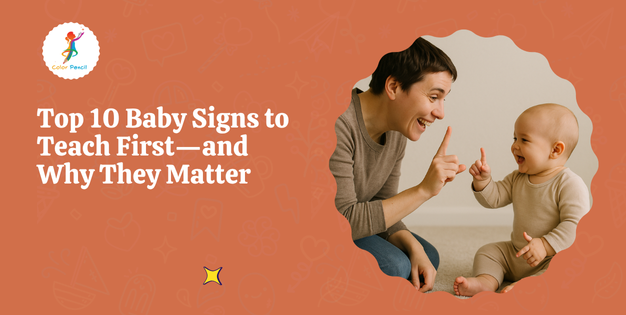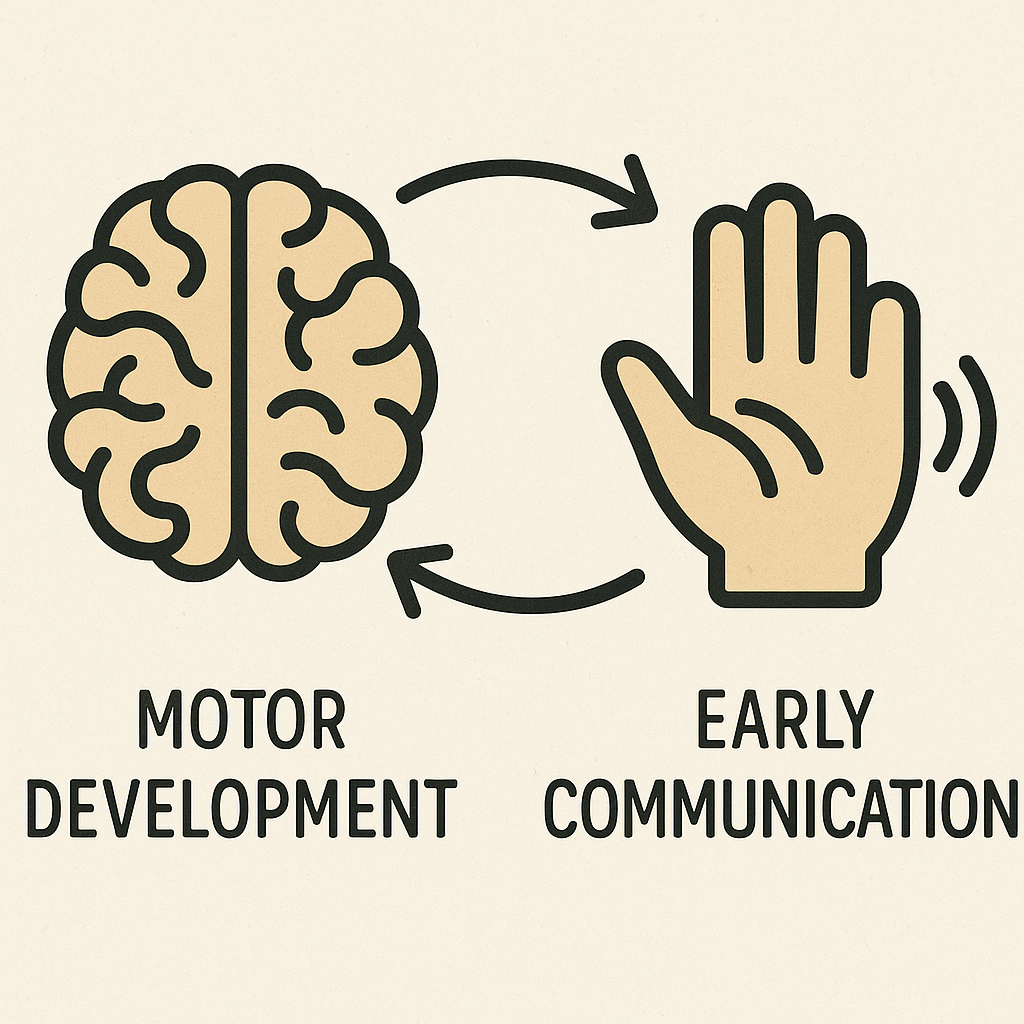
Top 10 Baby Signs to Teach First—and Why They Matter
Before your baby can speak, they can still communicate—with their hands. Teaching baby signs is a powerful way to reduce frustration, build early language skills,

Before your baby can speak, they can still communicate—with their hands. Teaching baby signs is a powerful way to reduce frustration, build early language skills, and create a deeper bond between you and your little one.
By using simplified sign language signs—many adapted from American Sign Language (ASL)—your infant can express needs and feelings long before they can form words. In this blog, we’ll show you the top 10 basic sign language signs to start with and explain why they matter during your child’s early development.

Babies are often able to coordinate their hands before their mouths. This makes sign language hand signs a natural bridge to spoken communication.
Benefits of teaching infant signs include:
And don’t worry—it won’t delay speech. Research shows that babies who sign tend to speak sooner and with larger vocabularies. Sign language is just one way to build language skills in babies. Learn how babies learn language through listening and interaction to support their communication journey in the early months.
You can introduce baby signs as early as 6 months. Most babies begin to use them independently between 8–12 months.
Here’s how to start:
These beginner hand language signs words are easy, practical, and used often in everyday routines:
Sign: Tap your fingertips together
Why it matters: Helps babies ask for more food, play, or anything they enjoy.
Sign: Turn your hands outward from your chest
Why it matters: Reduces mealtime power struggles and gives babies a way to signal when they’re done.
Sign: Open and close your fist, like milking a cow
Why it matters: Helps babies communicate hunger or feeding needs clearly.
Sign: Tap fingers to your mouth
Why it matters: One of the most basic helping signs for understanding needs.

Sign: Pretend to hold a cup to your mouth
Why it matters: Encourages independence around hydration and routine care.
Sign: Place one hand palm-up and the other in a thumbs-up position on top of it
Why it matters: Empowers babies to request assistance rather than cry.
Sign: Rub your open hand in a circle over your chest
Why it matters: A gentle introduction to manners and social cues.
Sign: Touch your fingers to your chin and move them outward
Why it matters: Reinforces gratitude and positive social interaction.
Sign: Open your hand over your face and slowly close it as your eyes “shut”
Why it matters: Helps babies signal tiredness before they’re overtired.
Sign: Rub your fists up and down your chest
Why it matters: Supports transitions and routines, especially before bedtime.
Incorporating baby signs into daily activities can enhance your child’s learning. Discover more fun and easy things to do with infants that will support their development and encourage bonding.

Baby signs aren’t just gestures—they’re conversation starters.
When you use sign language signs with your baby, you’re giving them a voice before they can speak. This builds confidence, deepens connection, and makes everyday parenting feel just a little easier.
Feeling Overwhelmed? Let’s Talk! Join Our Parent Forum and Get Expert Advice & Support!
“More,” “all done,” “milk,” “eat,” and “help” are great beginner signs used in daily routines.
No—babies who sign often speak earlier and more clearly than their peers.
Start around 6 months; babies usually sign back by 8–12 months.
Many are adapted from ASL, but baby sign language uses simplified gestures that may not be fully ASL-accurate.
Start with a few and build as your baby shows interest. Keep it simple and consistent.